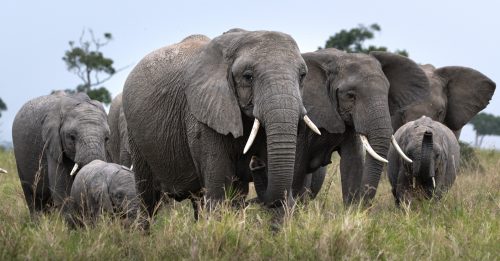
This week we witnessed something truly unusual. One of those jaw-dropping, once-in-a-lifetime sightings. It all began when we heard the news of lions mating not far away. Our guide, Jackson, put his foot to the pedal and we arrived at the scene. Within minutes, we spotted a big male who strolled briefly through the overgrown grass before lying down again. We identified him as Chongo, one of the Bila Shaka boys. His name directly translates to ‘bad eye’, referring to his most distinctive feature - a missing right eye.
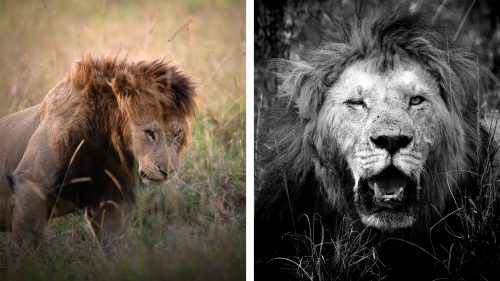
As we caught up to them, we noticed he had not one, but two females by his side. This was unusual but got even more intriguing. One of the lionesses was from the River Pride who recently sustained heavy injuries in a fight, consequentially leading to the loss of her right eye. This was the mother of all coincidences.
We waited patiently as they lazed around in the grass, doing what lions do best. Eventually, he got up and approached her. There it was, our chance to witness two lions, both with a missing right eye, mating. The golden light was the icing on the cake, illuminating them in a beautiful backlight and accentuating Chongo’s fabulous mane.

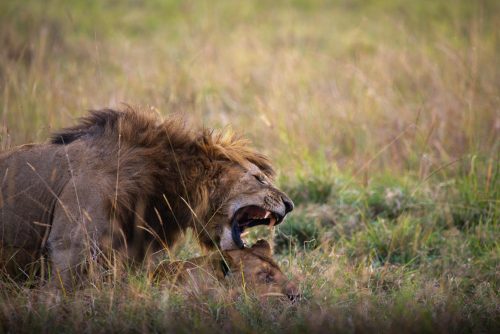
The following day we caught up with the Bila Shaka boys again, Koshoke, Kiok and even Chongo who had moved on from his honeymoon period. When mating, which can last up to five days, lions typically don’t hunt. This day, luck was on his side, as they stumbled upon the perfect meal to celebrate his return. The Bila Shakas were feasting on a hippo carcass with more than enough to satisfy all three of them. From the looks of it, Koshoke wasn’t impressed with our lenses and clicking shutters.

It seems that for elephants, the magic number is two. Around two years of age is when an elephant calf’s tusks first start to appear. Interestingly, these baby tusks are actually a set of milk teeth, extending from a socket in the skull. After two years of feeding, the mother will once again come into oestrus and mate with a bull. But ever the doting mom, she will continue to feed her older calf during the next gestational period – another two years, until the new calf is born. In some cases, the mother will still allow the older sibling to feed, even after the arrival of the new baby.
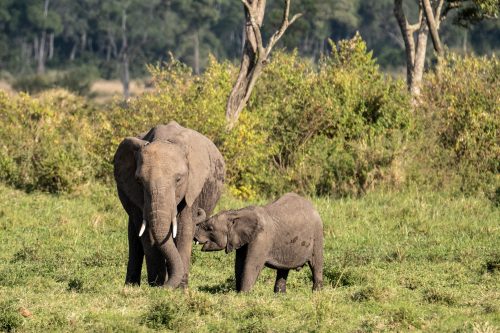
As seems to happen quite regularly in the Mara, love was in the air this week. We encountered a pair of ostriches – the male crouching down and dancing his heart out, hoping to win the heart of the female. It worked and she was wooed. Ostriches aren’t monogamous though, with both the males and females mating with multiple partners.
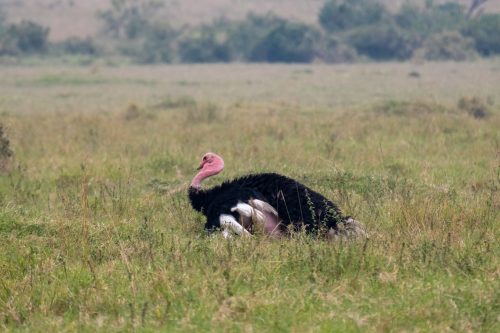
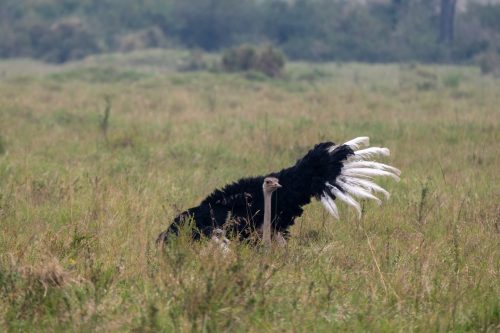
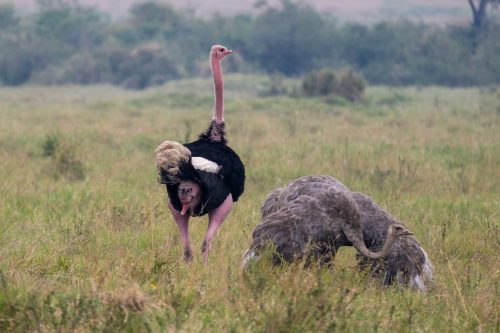
A serval sighting is always something special. Luck was on our side, as this serval scanned the grass thoroughly for any movement, eventually locking on a target and adjusting its body for the faithful leap. In the blink of an eye, the serval had landed a meal, popping up above the grass with a mouse in its mouth. That evening, we witnessed a masterclass from one of the savannah’s clinical finishers.
What servals may lack in size, they more than make up for in precision. With a higher hunting success rate than their bigger cousins, servals catch their prey in over half of their attempts, making them one of the best in the wild cat kingdom. This works out to about 20 percent better than lions who hunt together as a pride.
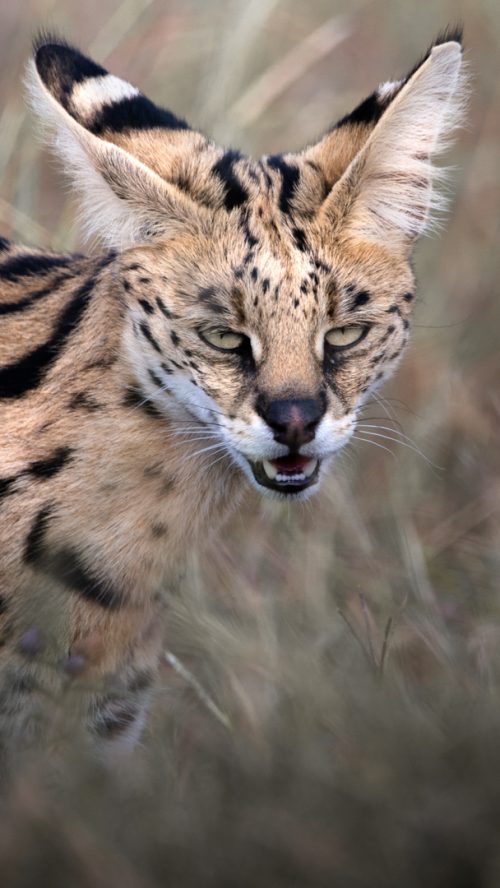
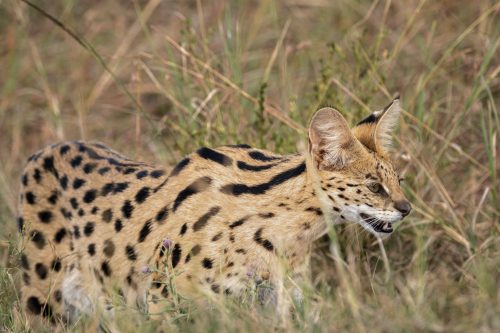
Last but not least, we cannot leave out the Great Migration. The Mara is currently overflowing with excitement as the wildebeest herds swarm in on a daily basis. The show is currently underway and we will experience a lot of action in the coming weeks.

With that, our second week at Angama comes to an end. If the last two weeks are anything to go by, no two weeks really are the same here, and we look forward to sharing all our Angama stories with you.

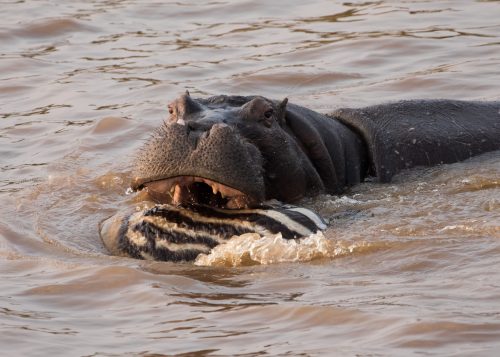
This time last year Adam managed to capture an incredible picture of a hippo with the stolen spoils of a crocodile. Hippos are known to occasionally feed on carcasses, presumably for nutrients otherwise lacking in their diet.
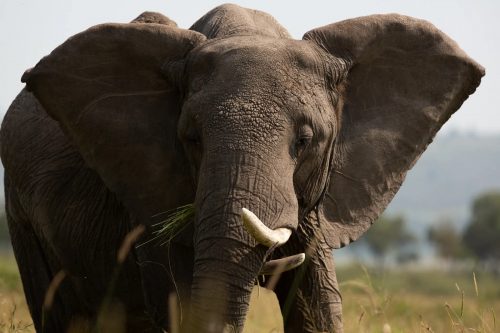
Two years ago we were treated to an extraordinary sighting of a very unique female elephant whose right tusk literally wrapped around underneath her mouth.
Filed under: This Week at Angama
Subscribe for Weekly Stories
Comments (0):

Angama Image Gallery